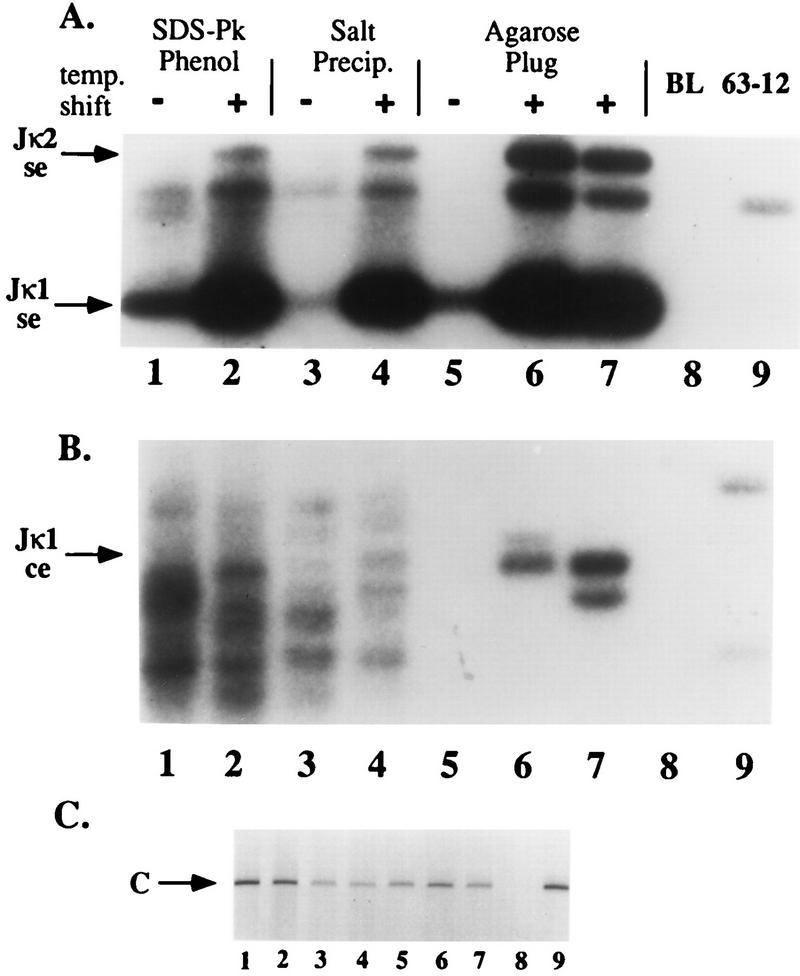FIG. 2.
Broken coding-end DNA can be detected in induced 103 bcl2/4 cell DNA. (A and B) 103 bcl2/4 cells were induced to activate V(D)J rearrangement by a temperature shift. DNA was prepared from induced 39°C (lanes +) and uninduced 33°C (lanes −) samples by the indicated techniques as described in the text. The samples were analyzed by LM-PCR for broken signal ends (se) (A) and broken coding ends (ce) (B) at the Jκ1 locus. Phosphorimages of oligonucleotide-probed Southern blots of reaction products are shown with the positions of various signal and coding ends indicated by arrows. (C) Ethidium bromide-stained agarose gel analysis of control amplifications of a nonrearranging locus (CD14) from the same DNA samples used in panels A and B. Controls included buffer in place of template (BL; lane 8) and 63-12 cell DNA (a RAG-2-deficient cell line; lane 9). Lanes 6 and 7 contain two independently purified DNA samples. SDS-Pk, sodium dodecyl sulfate plus proteinase K.

